 https://media.airfactsjournal.com/wp-content/uploads/2023/06/13154025/Lockheed_L-1011-385-1-15_TriStar_100_Trans_World_Airlines_-_TWA_AN1634043.jpg
920
1280
Jerry Lawler
https://media.airfactsjournal.com/wp-content/uploads/2024/09/03140241/AF_Logo_24.png
Jerry Lawler2024-09-23 08:55:092024-10-04 15:11:04A Big Surprise from an FAA Inspector
https://media.airfactsjournal.com/wp-content/uploads/2023/06/13154025/Lockheed_L-1011-385-1-15_TriStar_100_Trans_World_Airlines_-_TWA_AN1634043.jpg
920
1280
Jerry Lawler
https://media.airfactsjournal.com/wp-content/uploads/2024/09/03140241/AF_Logo_24.png
Jerry Lawler2024-09-23 08:55:092024-10-04 15:11:04A Big Surprise from an FAA InspectorNEW ARTICLES
OUR MOST RECENT POSTS
Air Facts was first published in 1938 by Leighton Collins, dedicated to “the development of private air transportation.” It’s a different world now, and it’s a different Air Facts. Relaunched in 2011 as an online journal, Air Facts still champions, educates, informs and entertains pilots worldwide with real-world flying experiences. More…
 https://media.airfactsjournal.com/wp-content/uploads/2023/06/13154025/Lockheed_L-1011-385-1-15_TriStar_100_Trans_World_Airlines_-_TWA_AN1634043.jpg
920
1280
Jerry Lawler
https://media.airfactsjournal.com/wp-content/uploads/2024/09/03140241/AF_Logo_24.png
Jerry Lawler2024-09-23 08:55:092024-10-04 15:11:04A Big Surprise from an FAA Inspector
https://media.airfactsjournal.com/wp-content/uploads/2023/06/13154025/Lockheed_L-1011-385-1-15_TriStar_100_Trans_World_Airlines_-_TWA_AN1634043.jpg
920
1280
Jerry Lawler
https://media.airfactsjournal.com/wp-content/uploads/2024/09/03140241/AF_Logo_24.png
Jerry Lawler2024-09-23 08:55:092024-10-04 15:11:04A Big Surprise from an FAA Inspector
Friday Photo: Reno Air Races 2023
Friday PhotoSport class racers join up on the pace plane for the final Reno Air Races of 2023.

I’m still scared of flying
My Adventure, UncategorizedWhen the Decathalon arrived, he provided dual aerobatic instruction in it and we formed a very small air charter business wherein he served as the PIC of a light twin which we leased locally. I was chief cook and bottle washer and kept the books.

From the archive: A Pleasant Time
Air Facts ArchivesI'm free in the Skylane and I'm not in the 707. That's why so many airline pilots are private pilots too and own airplanes. It's too bad more people don't realize that about 99% of the airline pilots are very much on the private pilot's side of things and often envy him considerably. They don't feel he's their problem in life.

What NTSB Reports Say About Impossible Turns and AOA (Part II)
OpinionBecause successful impossible turns are not accidents and not reportable to the NTSB, none showed up in the NTSB data. However, the very embarrassing rhetorical question is, how did all those past impossible turns succeed when none of those aircraft had a visual AOA indicator? Given the rarity of visual AOA indicators in recent years, it’s a safe bet that visual AOA indicators would not have been installed in any, or hardly any, of those airplanes.

Aviation at the leading edge of science
HistoryCharles was onboard with Nicholas Robert when his hydrogen balloon made its first flight on December 1, 1783. The Charlière flew farther, higher, and longer than the Montgolfiere had done two weeks earlier. When they eventually touched down, Nicholas Robert got out, and the balloon immediately went up again, making Charles the first man to fly solo.
John’s Blog
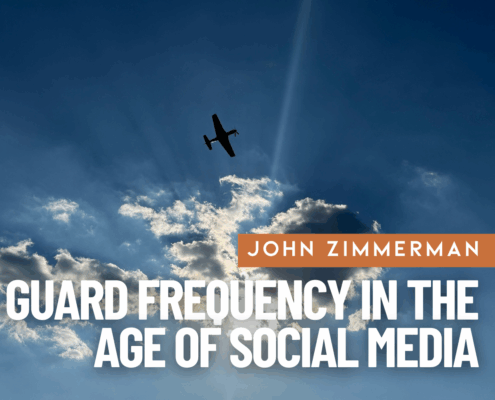
Guard frequency in the age of social media
John's blogYes, this is an “old man yells at cloud” article. Yes, I can already hear the jokes about the “guard police.” I don’t care. It needs to be said: Guard frequency (121.5) has become a national embarrassment, a sign that our self-absorbed social media culture has spread to the once-boring world of aviation. We need to do better.
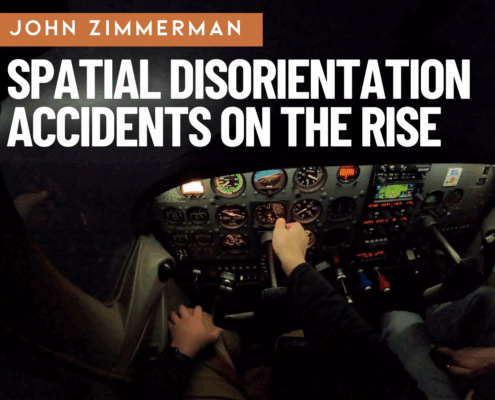
Why are spatial disorientation accidents on the rise?
John's blogResearchers from the FAA show that SD accidents have not declined since 2003—in fact, quite the opposite. You might assume the widespread adoption of tools like datalink weather, modern autopilots, reliable AHRS, and electronic flight bag apps would make VFR-into-IMC (the classic SD accident scenario) much less common. It’s a great theory, but the numbers don’t support it.

The aviation community is alive and well
John's blogBefore the expletive could even leave my mouth, one of the FBO employees offered to lend me the crew car. I assumed the crew car option would be impossible, or at least impossibly bad manners, since the round trip would be nearly two hours and the FBO was closing soon. But he wouldn’t hear it: “take all the time you need and just drop the keys off with the night security guard. We appreciate your business.”
I Can’t Believe I Did That
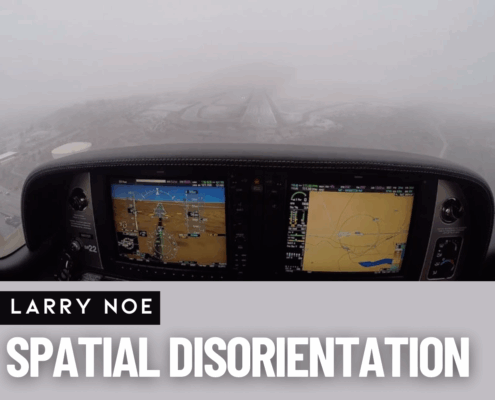
Spatial Disorientation: I Thought It Couldn’t Happen to Me
I Can't Believe I Did ThatI began climbing to get between layers, intending to stabilize and then request IFR. But as I entered the clouds, what I thought could never happen did. I was in an unusual attitude: 45 degrees banked and nose down. For a moment, I considered pulling the CAPS parachute. I had often wondered if I’d have the presence of mind to use it in a real emergency. After this, I know the answer is yes. But I also realized I could recover.
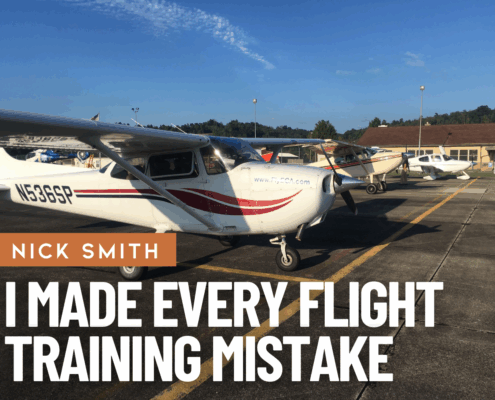
I Made Every Flight Training Mistake Humanly Possible
I Can't Believe I Did ThatFlight training is rarely a straight line, but for Nick Smith it turned into a winding, four–year journey full of delays, false starts, and unexpected costs. In this brutally honest account, he shares the mistakes he made—so future pilots don’t have to repeat them. His story is both a cautionary tale and a reminder that perseverance can still lead to the certificate.

A Quarter Tank and a Prayer
I Can't Believe I Did ThatI was watching the fuel gauges drop before my eyes. I elected to continue to ECG rather than turn back. I was on a direct course. The Norfolk controller wished me luck—not the most reassuring sign—and handed me off to ECG Tower, who had already been briefed.
Opinion
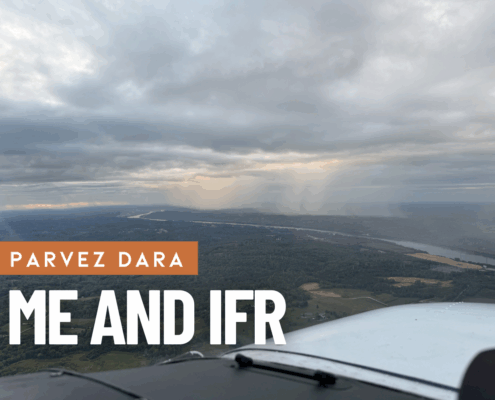
Me and IFR
OpinionDuring another smooth cloudy day, a relative—who shall remain unnamed—asked if I wanted to fly. Weather was marginal VFR; he had his IFR rating. At 3,000 feet, we entered clouds. I panicked briefly, deer-in-headlights style. Calmly, he asked me to hand him his foggles from the seat pocket. Did that give me confidence? Not really. But the flight remained calm and uneventful. He wore view limiters in clouds for comfort—something I couldn’t quite fathom at the time.

Yes, I Still Take Flying Lessons
OpinionI approach every flight with an instructor with a plan of my own. I don’t just show up because the calendar says it’s time. I bring specific goals, real-world questions, and skills I want to sharpen. My annual IPC isn’t about checking FAA boxes; it’s about tackling challenges I’ve faced over the year and flying approaches that have pushed me.
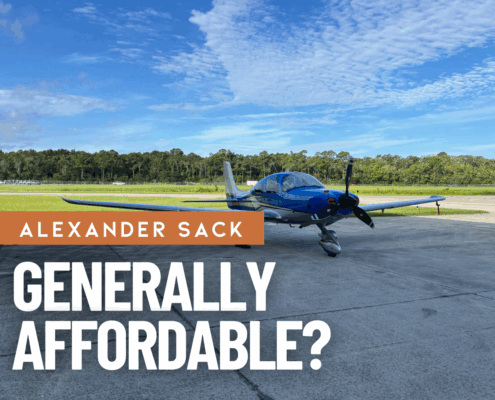
Generally Affordable? The Truth About Flying Costs
OpinionThe economics of flying is not for the faint of heart. In fact, the average cost of just getting your “license to learn” is now hovering around the $20,000 mark. And if that number doesn’t faze you, then let me sprinkle in some rampant inflation, a tight insurance market, and just the high opportunity cost of staying current—let alone proficient—into the mix.
More Articles
Recent Posts
Email newsletter
Write for us!
Did you know that most of the articles at Air Facts are written by readers like you? You do not have to be Richard Collins or Ernest Gann – simply a GA pilot with a story you’d share with friends sitting in the hangar.

